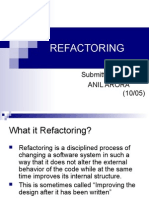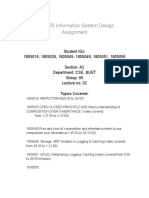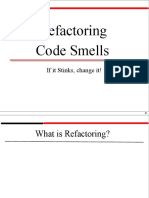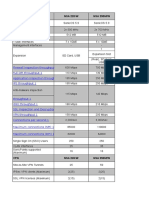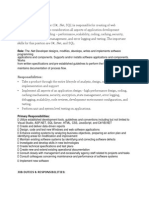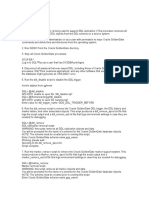0% found this document useful (0 votes)
11 views44 pagesRefactoring 1
Refactoring is a structured process aimed at improving code quality while preserving its external behavior. It involves techniques to evolve software design incrementally as requirements change, with benefits including reduced code size and improved maintainability. The document also outlines various types of refactoring, identifies 'bad smells' in code, and emphasizes the importance of refactoring for better understanding and faster programming.
Uploaded by
Asad Shafiq BSSE 2022 FAST NU LHRCopyright
© © All Rights Reserved
We take content rights seriously. If you suspect this is your content, claim it here.
Available Formats
Download as PDF, TXT or read online on Scribd
0% found this document useful (0 votes)
11 views44 pagesRefactoring 1
Refactoring is a structured process aimed at improving code quality while preserving its external behavior. It involves techniques to evolve software design incrementally as requirements change, with benefits including reduced code size and improved maintainability. The document also outlines various types of refactoring, identifies 'bad smells' in code, and emphasizes the importance of refactoring for better understanding and faster programming.
Uploaded by
Asad Shafiq BSSE 2022 FAST NU LHRCopyright
© © All Rights Reserved
We take content rights seriously. If you suspect this is your content, claim it here.
Available Formats
Download as PDF, TXT or read online on Scribd
/ 44


